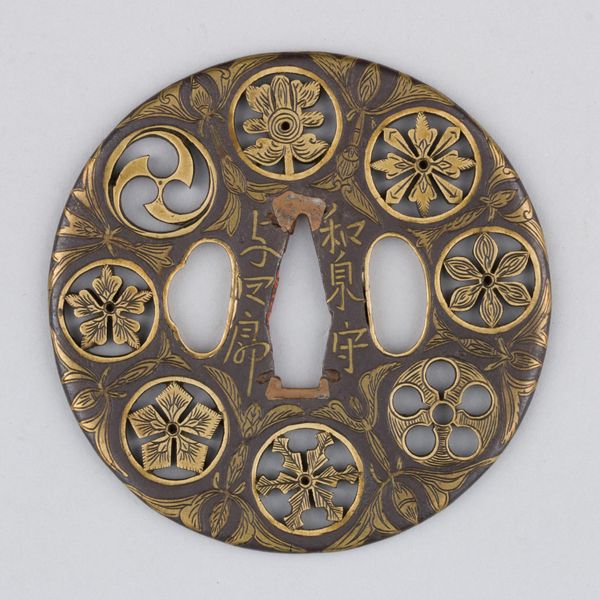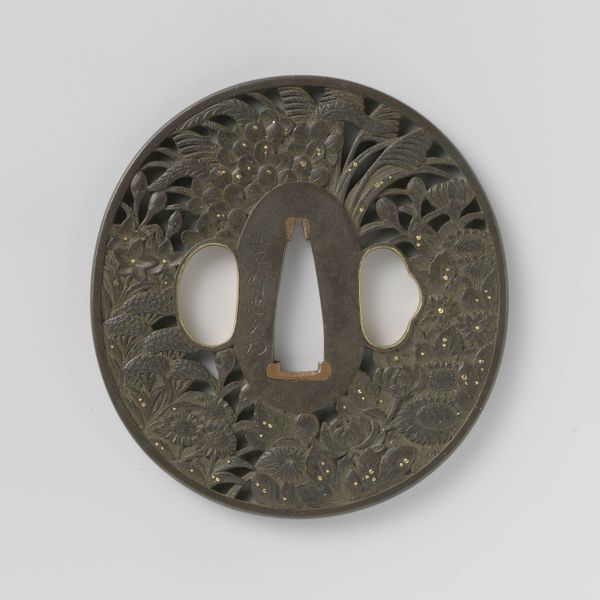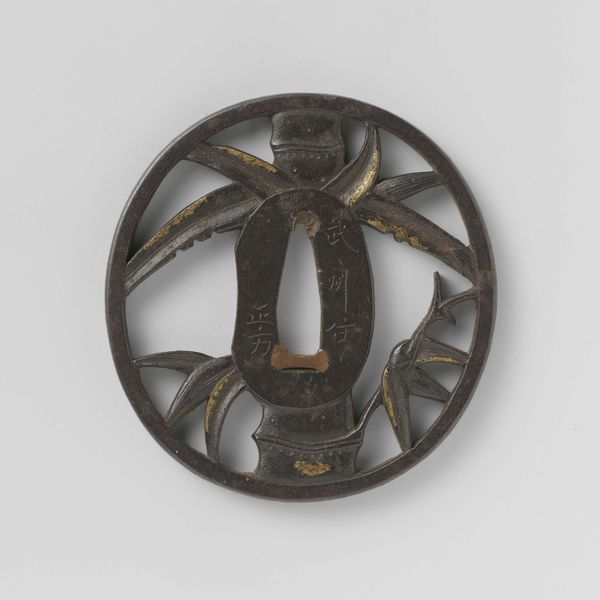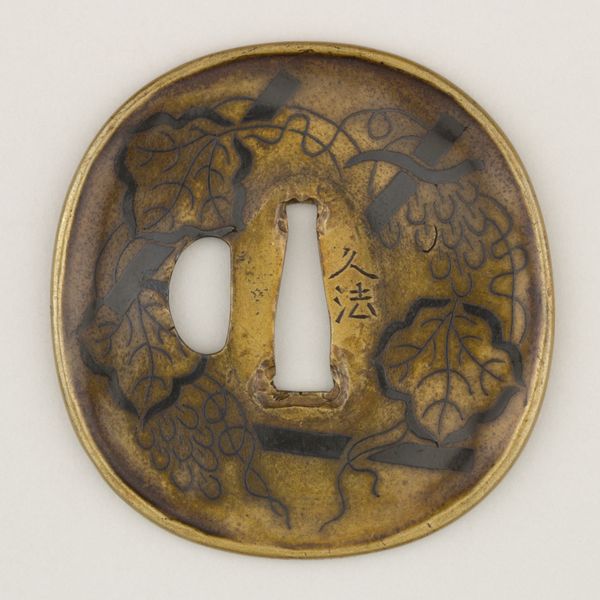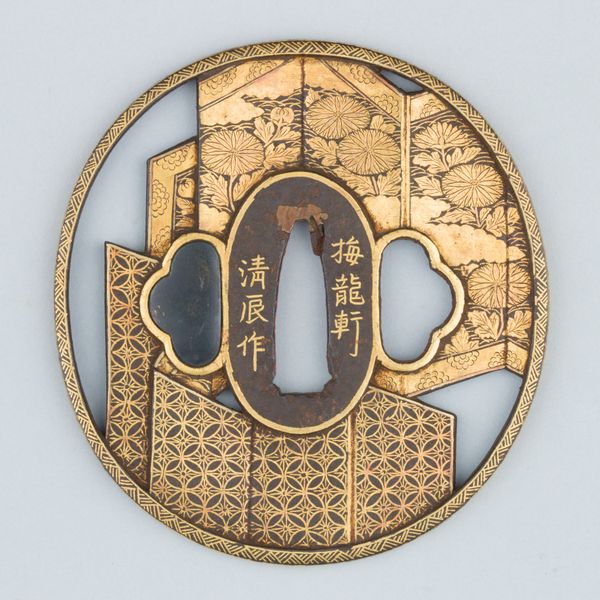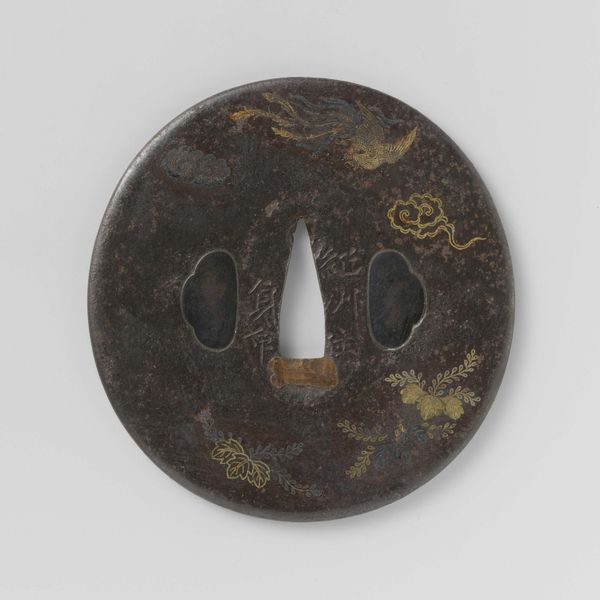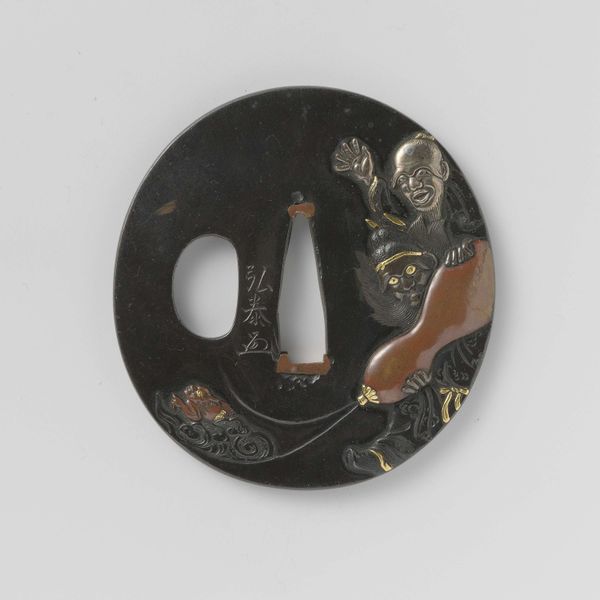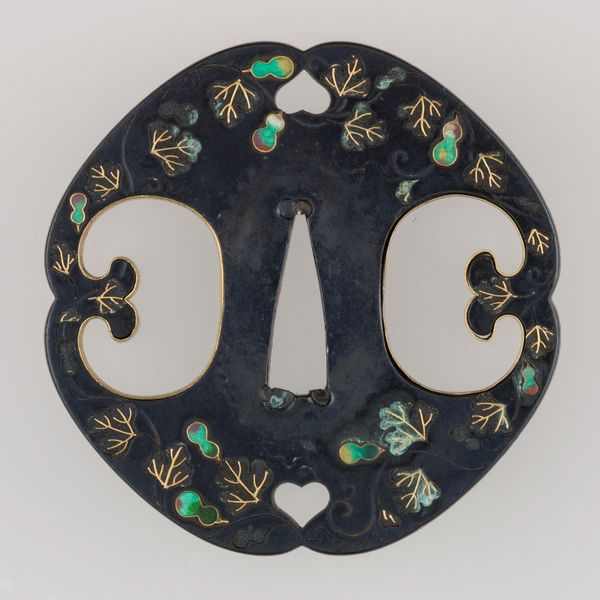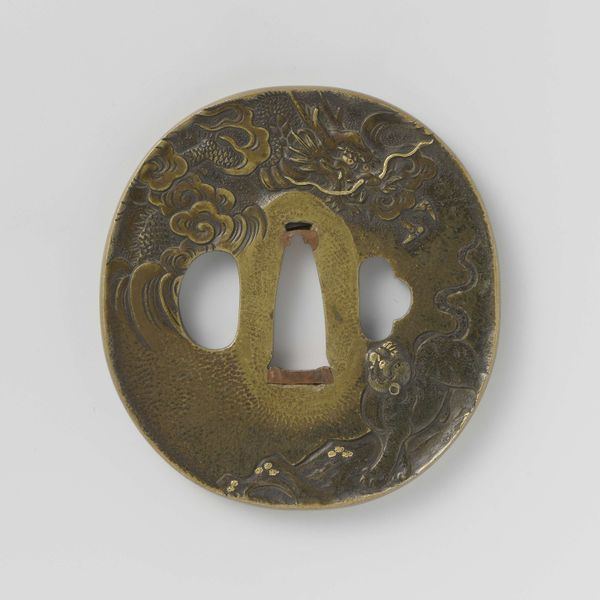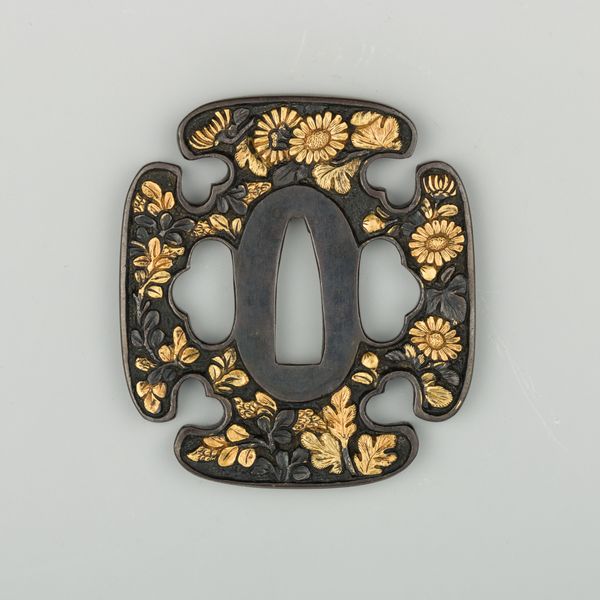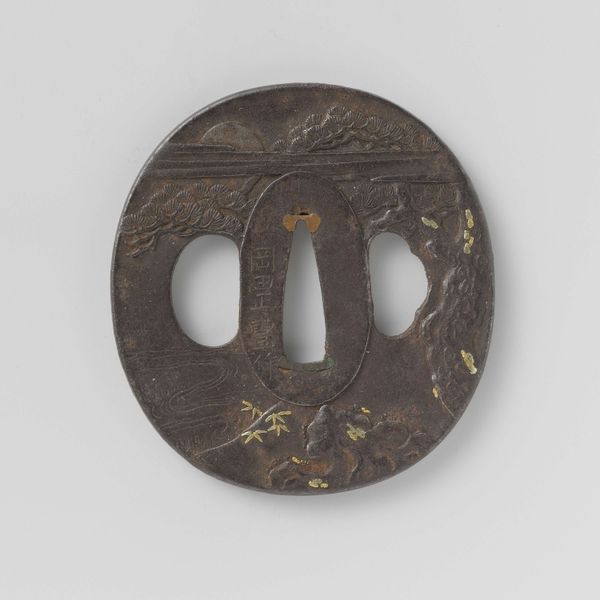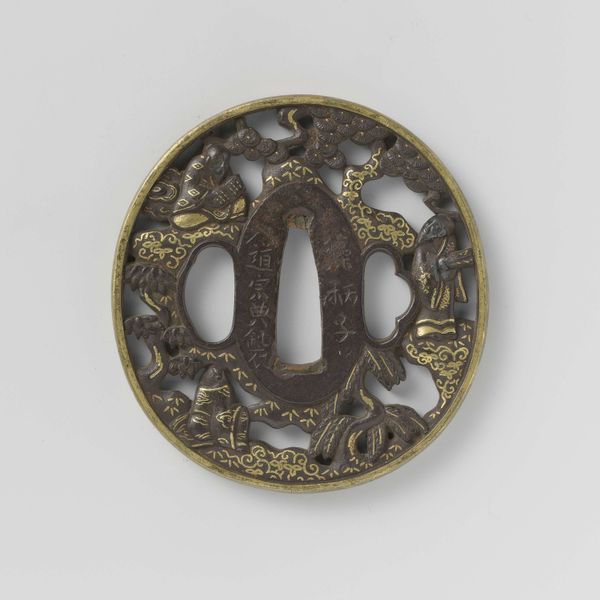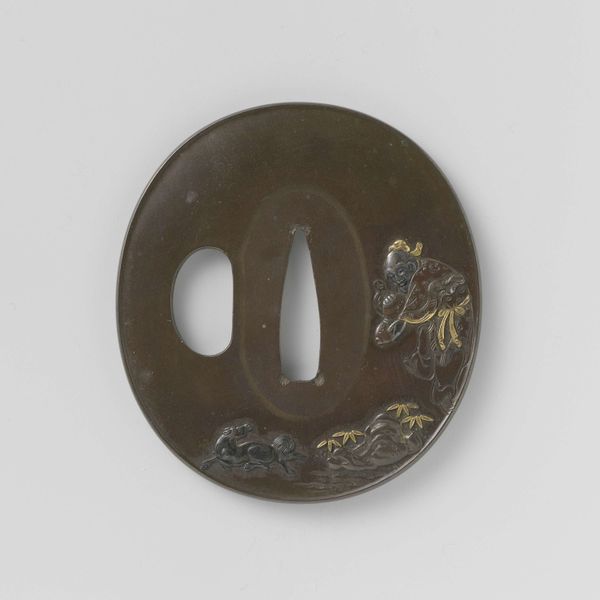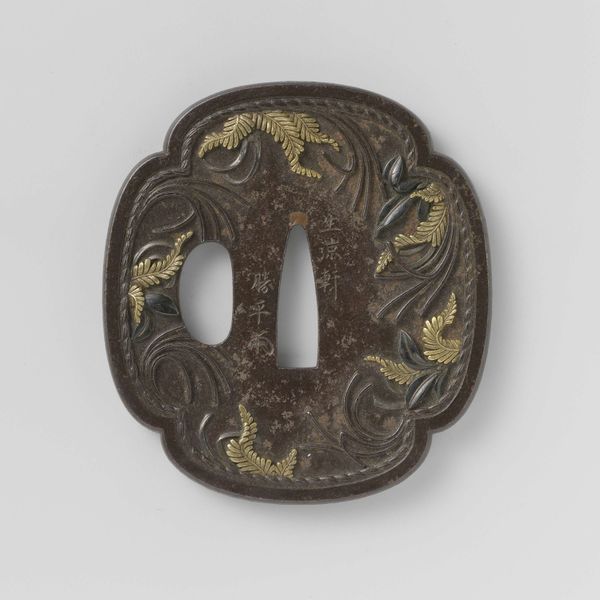
Sword guard (<i>Tsuba</i>) Depicting Crests and Arabesques (家紋散唐草文鐔) 1575 - 1615
0:00
0:00
metal, engraving
#
metal
#
asian-art
#
sculptural image
#
geometric
#
decorative-art
#
engraving
Dimensions: Diam. 3 5/8 in. (9.2 cm); thickness 3/16 in. (0.5 cm); Wt. 5.4 oz. (153.1 g)
Copyright: Public Domain
This is an iron sword guard, or tsuba, inlaid with gold, made by Koike Izumi no Kami Naomasa who died in 1615. Its decoration is based on crests and arabesques. The tsuba was a key element of the Japanese sword, protecting the wielder’s hand, but it also became a canvas for elaborate decoration. Aristocratic emblems were combined with scrolling foliage and geometric forms, referencing various cultural traditions. Produced in a time of relative peace, the tsuba’s ornament speaks to a samurai culture that was increasingly defined by ceremony and display. Institutional histories tell us that sword fittings were collected and displayed as works of art, and books of designs were produced for their makers. To better understand an object like this, we might consult period pattern books, museum collection catalogues, and historical accounts of samurai culture. By approaching this tsuba as a material object embedded in its social and institutional context, we can better appreciate its historical significance.
Comments
No comments
Be the first to comment and join the conversation on the ultimate creative platform.
